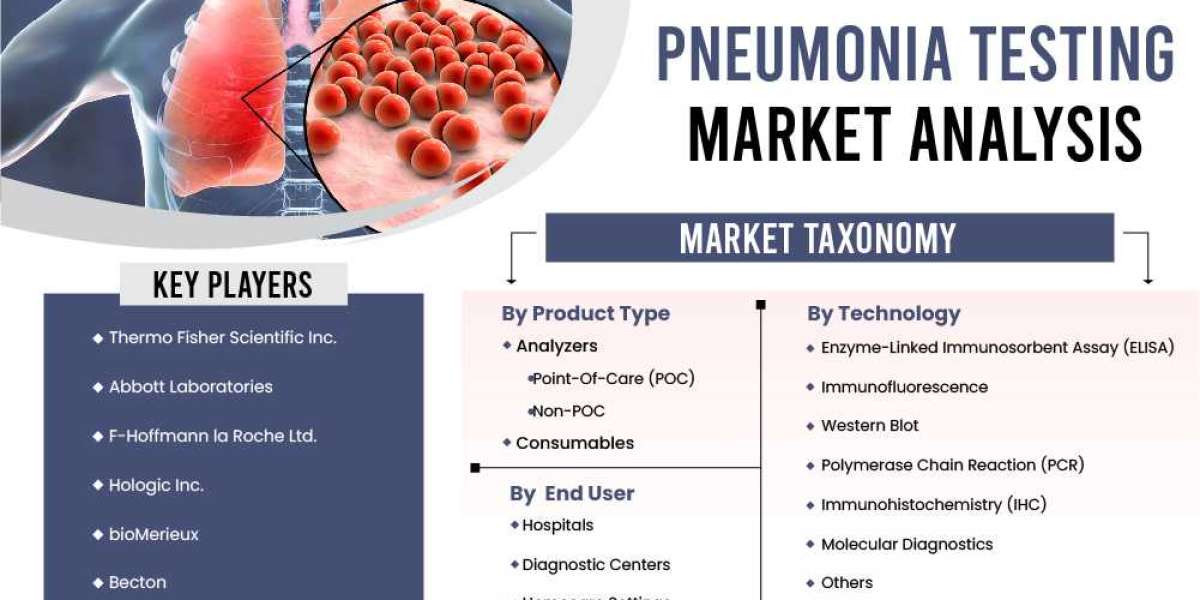The pneumonia testing market has been witnessing significant growth and transformation in recent years. Pneumonia, a respiratory infection that can be caused by various pathogens, has always been a health concern. The emergence of new technologies and diagnostic methods has reshaped the way we detect and manage this potentially life-threatening condition. In this blog, we will explore the key trends and advancements in the pneumonia testing market.
- Rapid Molecular Diagnostics
One of the most noteworthy developments in pneumonia testing is the adoption of rapid molecular diagnostics. Polymerase Chain Reaction (PCR) and other nucleic acid amplification techniques have revolutionized the detection of pneumonia-causing pathogens. These tests offer high sensitivity and specificity, enabling healthcare providers to quickly identify the responsible microorganism and choose the most effective treatment.
- Point-of-Care Testing
Point-of-care testing (POCT) for pneumonia is gaining traction. POCT allows healthcare professionals to diagnose pneumonia right at the bedside or in a clinical setting, eliminating the need for sending samples to a central laboratory and waiting for results. This speedier approach to diagnosis facilitates prompt initiation of treatment, improving patient outcomes.
- Biomarker Detection
Researchers are continually identifying new biomarkers associated with pneumonia. These biomarkers, such as specific proteins or genetic markers, can provide valuable diagnostic information. The development of assays targeting these biomarkers is enhancing the accuracy and efficiency of pneumonia testing.
- Imaging Advancements
While laboratory tests play a critical role in pneumonia diagnosis, imaging techniques remain essential. Radiography, computed tomography (CT), and ultrasound are being used to visualize lung abnormalities associated with pneumonia. Advances in imaging technology are enabling earlier and more precise detection of pneumonia-related changes in the lungs.
- Artificial Intelligence (AI)
Artificial intelligence is making its mark in pneumonia testing. Machine learning algorithms can analyze medical images and clinical data to assist in pneumonia diagnosis. AI can aid in identifying subtle patterns in imaging studies and improve the accuracy of interpretation, leading to more reliable diagnoses.
- Vaccine Development
Prevention is as important as diagnosis and treatment. The development of effective vaccines against common pneumonia-causing pathogens, such as Streptococcus pneumoniae and Haemophilus influenzae, has reduced the incidence of pneumonia. The pneumonia testing market is intertwined with the vaccination landscape, as vaccine coverage impacts disease prevalence.
- Telemedicine
The growth of telemedicine has extended to pneumonia testing and diagnosis. Patients can consult with healthcare professionals remotely, reducing the risk of infection transmission and enhancing access to medical care. Telemedicine platforms also offer guidance on when and where to seek pneumonia testing.
Conclusion
The pneumonia testing market is evolving rapidly, driven by advancements in diagnostics, imaging, and technology. Rapid molecular diagnostics, point-of-care testing, biomarker detection, imaging advancements, AI, vaccine development, and telemedicine are all contributing to more effective pneumonia diagnosis and management. As these innovations continue to shape the landscape, we can anticipate improved patient outcomes and a more efficient healthcare system in the fight against pneumonia.
Read More….







